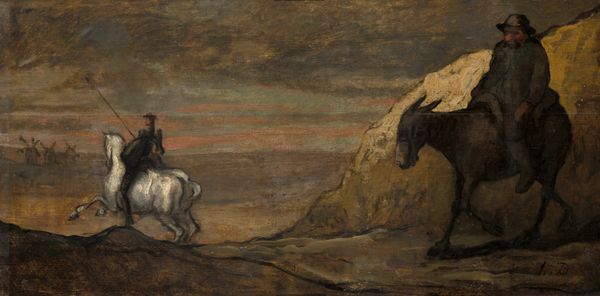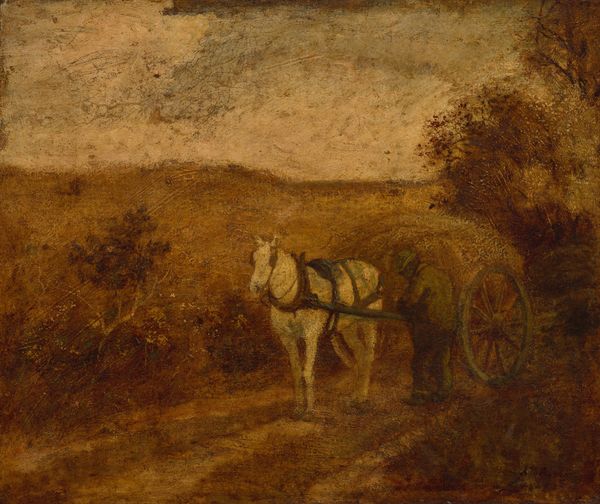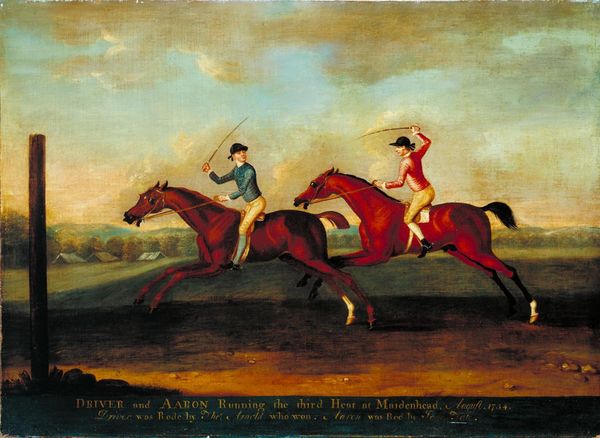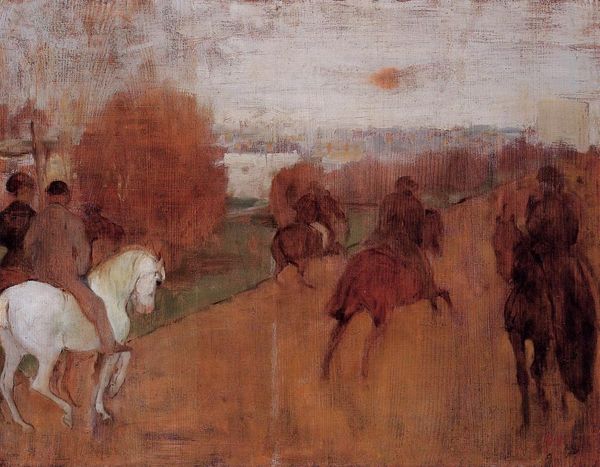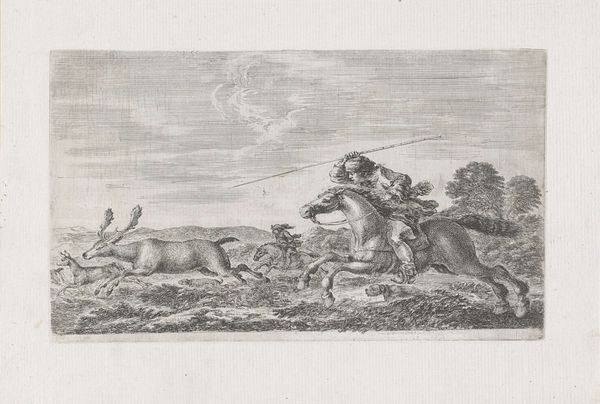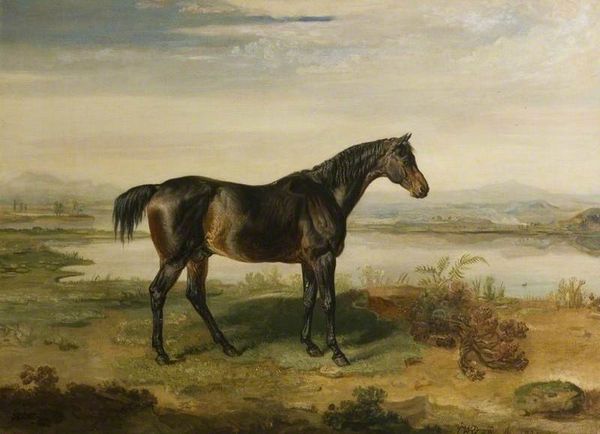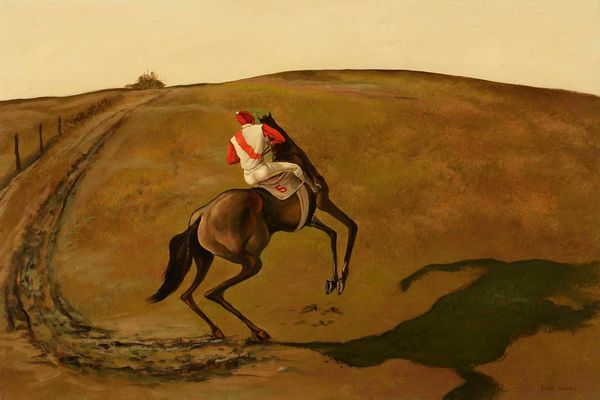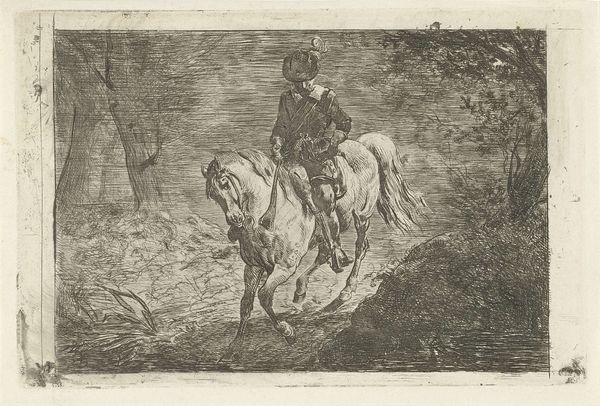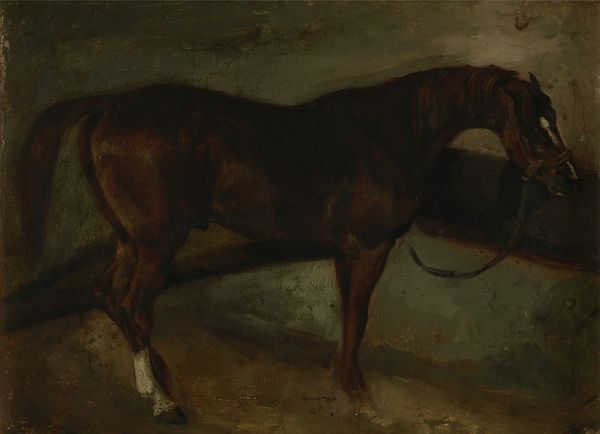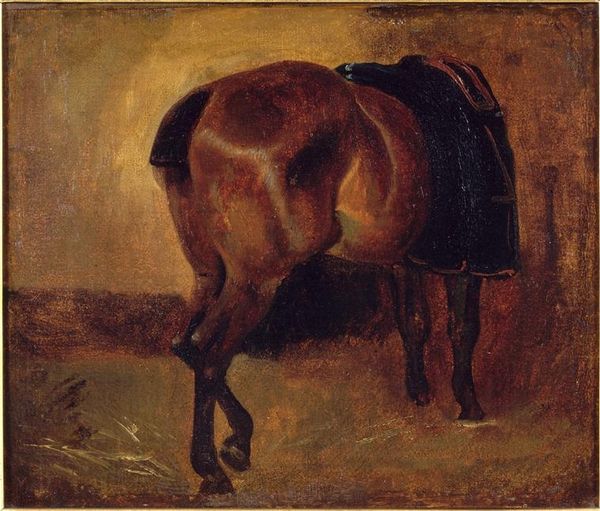
The Race Track (Death on a Pale Horse) 1900
0:00
0:00
albertpinkhamryder
Cleveland Museum of Art (CMA), Cleveland, OH, US
Copyright: Public domain
Albert Pinkham Ryder summons profound anxieties with oil on canvas in his "The Race Track (Death on a Pale Horse)." At its heart is the skeletal figure of Death, astride a pale horse, cracking a whip. This symbol resonates with the Book of Revelation, where Death rides forth as one of the Four Horsemen, bringing pestilence and destruction. But Ryder's vision extends beyond mere biblical illustration. Note the snake slithering in the foreground. A motif as old as time itself, it represents temptation, primal fear, and the lurking presence of evil. Its presence harkens back to the Garden of Eden but also evokes images of ancient healing rituals, revealing the snake's deeply conflicted symbolism. Consider how the stark contrast between the rider's frenzied pace and the desolate landscape evokes a deep, subconscious dread. The horseman’s wild ride transcends its religious origins, tapping into a primal fear of mortality. Death, the horseman, and the serpent are all archetypes; their persistent recurrence in art demonstrates how collective memory shapes our deepest fears and anxieties.
Comments
No comments
Be the first to comment and join the conversation on the ultimate creative platform.
